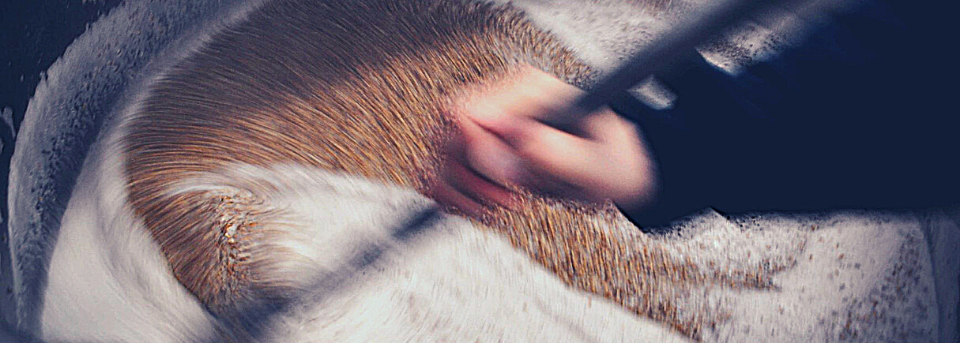The answer to this age-old quandary depends on a number of factors, including what type of beer it is, how good the beer is, and what the ambient temperature is where you’re going to drink it, but I think we can all agree that “2C” is never the correct temperature unless you’ve just run a marathon in a desert or something! However, one thing to remember above all is that the “right” temperature to drink a particular beer at is the one at which you enjoy it the most. If you prefer drinking your favourite beer at four degrees Celsius even though the brewery recommends 12 degrees Celsius, then go for it, it’s your choice – but it’s probably wise to at least consider the recommendation before dismissing it out of hand.
Note that we’re looking at serving temperature here, not storage temperature – that’s a whole different topic that’s become a talking point recently, and we might cover it in the near future – but in the meantime, let’s look at how cold (or warm) your beer should be when you take that first sip.
There has long been a friendly rivalry across the Atlantic Ocean between the Americans on the one hand, who tend to drink their beer cold and can’t understand why the British drink “warm” beer, and the Brits on the other hand, who assume that American beer is best served cold because it means you don’t have to taste it.
Now, both of these points of view are based on an outdated impression of each nation’s beer culture and don’t take into account either the cross-pollination of styles and techniques that has happened in the last thirty years or so or the massive boom in independent and craft breweries in the USA that has seen a bit of a shift away from macro-produced light lager towards a varied range of interesting and tasty styles.
Traditional British (cask) beer is typically designed to be at its best when served at “cellar temperature” – around 12-13 degrees Celsius (about 55 degrees Fahrenheit). Older British pubs were built with cellars that would be at around that temperature and, when they were built, there wouldn’t have been much that a publican could have done about the temperature. It would have varied a bit with the weather, but it would have been assumed that beers would generally be served from a cask sitting in a cellar at 12 degrees Celsius.
As refrigeration was invented and then became accessible to ordinary folk, the possibilities for beer expanded until we developed some unofficial rules for the temperature at which beer should be served. Generally, lighter (in colour) beers should be served colder than darker ones, weaker beers should be served colder than stronger ones and lagers should be served colder than other beers. There are exceptions to every rule, of course, including the golden rule above – drink it at the temperature you like it.
There are different schools of thought on just how cold the coldest-drinking beers should be served. Our view at Beerblefish is that four degrees is the absolute lowest temperature a beer should be served at, and that should be reserved for macro lagers that have little to no hop flavour. A tasty lager or a very pale ale should be a little warmer than that – maybe five to six degrees – and then other types of beer should get a little warmer from there.
The problem with serving beer very cold is that it inhibits the release of carbon dioxide (i.e. you don’t get as many bubbles rising to the surface and popping), and it’s the carbon dioxide that helps the aroma of the beer to escape into your nose as you go to take a sip. Aroma makes up a huge part of our beer drinking experience, so if we lose that part, it impacts our enjoyment of the beer as a whole. On the other hand, it can be difficult to regulate the pressure of a well-carbonated beer if it’s too warm – if it’s on draft, it will fob, and a bottle is likely to gush out like a Champagne fountain. So, that leaves us needing to find the happy medium between these two perils.

At Beerblefish we recommend that our Heritage Ales are served at British cellar temperature (12 degrees Celsius) – they are based on nineteenth century recipes, so the British pub cellar is their natural habitat. If it’s a very warm day, we might put a bottle of 1853 ESB or 1892 IPA in the fridge for a short while before drinking, but we’d rarely chill our 1820 Porter even when the sun’s shining.
Our contemporary beers have more varied needs. Our stouts and milds, particularly the imperial varieties, and Edmonton Best Bitter should also be at cellar temperature – as should Beerblefish’s new baby, Gingerbeerble – but many of our paler beers need a bit of chilling. We recommend that our Hoppy Pale Ale series, Cashmere Brut IPA and Pan Galactic Pale Ale should be served at around five to six degrees Celsius. That’s probably a little warmer than your fridge, so either don’t put them in for too long, or make sure you take your time in pouring them and finding your snacks to go with them! And don’t forget that your hands will warm up the glass, so there might be no harm in slightly over-chilling.
At the end of the day, we all have our preferences for beer temperature – some of those are based on expectation from our beer cultural experiences, and others just because we like something a certain way, but we at Beerblefish believe it’s important to keep an open mind when drinking beer because we might just learn or try something new one day that massively enhances our beer-drinking experience!



Recent Comments